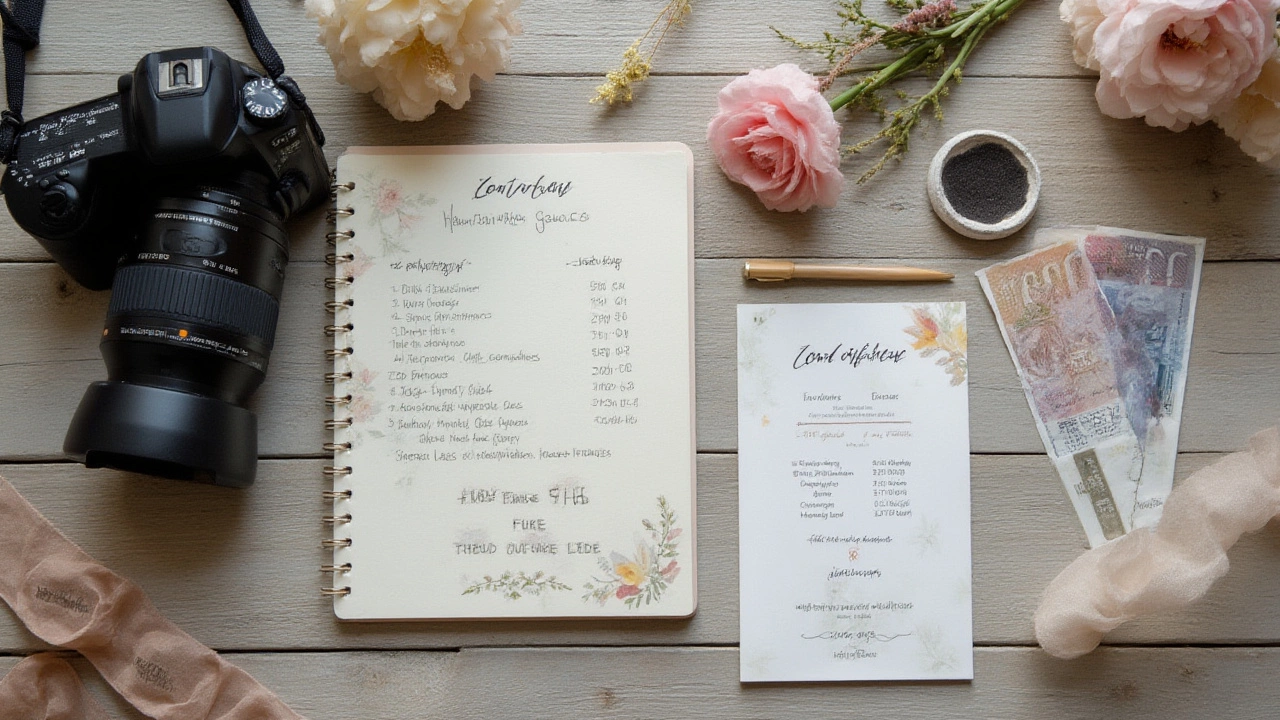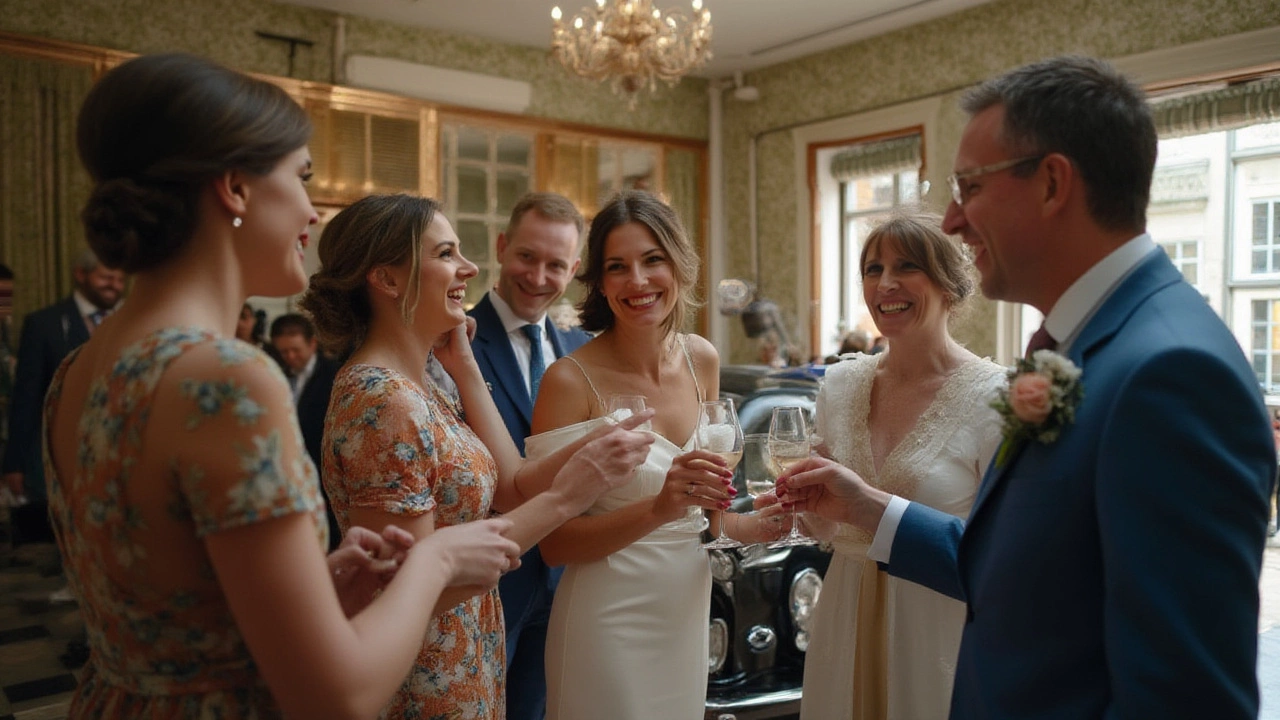A three-hour wedding shoot sounds simple, right? Not so fast. Pricing for wedding photography can swing wildly, and more than a few couples get sticker shock when they start asking around. Did you know that in the US, wedding photography is the fastest-growing expense in modern ceremonies after catering? Some couples shell out more on photos than the cake and the dress combined. So what's behind these eye-popping numbers, especially when the actual shoot lasts just three hours?
What Goes Into a 3 Hour Wedding Photography Package?
Let’s break it down: hiring a photographer isn’t just paying for three quick hours and a USB stick of photos. There’s way more happening behind the scenes. First, there’s the pre-wedding consultation, where you and your photographer nail down your vibe, shot list, and timeline. Some photographers scout your venue ahead of time, testing lighting and picking out backdrops, which takes planning and travel time they don’t always bill separately. Gear matters too, and most serious wedding photographers show up with at least $5,000 worth of camera bodies, backup bodies, lenses, flashes, and gadgets that make your aunt’s smartphone look like a potato in comparison.
Insurance isn’t optional. If Aunt Linda trips over a tripod or the camera bag, your photographer needs liability coverage. Next up: time. For every hour they spend at your wedding, experienced photographers estimate they’ll spend at least two to three hours culling, editing, retouching, exporting, and formatting images afterward. So three hours of shooting usually means closer to twelve hours of real work. Don’t forget software subscriptions for editing, hard drive backups, and website fees for client galleries. Every photo in your album is the result of a whole chain of professional skills and costs. Even short weddings still want key moments captured: the ceremony, couple’s portraits, family group shots, maybe even a mini reception. Capturing these compressed memories requires the same expertise as a full-day event—your photographer just has to work faster.
How Much Should a Photographer Charge for a 3 Hour Wedding in 2025?
If you’re hoping for an exact answer, buckle up—prices jump based on your location, your photographer’s experience, what’s included, and demand. Here’s a look at actual wedding photographer rates across the US, UK, Australia, and Canada for 2025 (sourced from recent vendor polls and market reports):
| Country | Average 3 Hour Package | Low Range | High Range |
|---|---|---|---|
| USA (Large City) | $1,050 | $700 | $2,000 |
| USA (Small Town/Rural) | $750 | $450 | $1,300 |
| UK | £660 | £400 | £1,200 |
| Australia | AU$1,200 | AU$700 | AU$2,000 |
| Canada | CA$1,100 | CA$600 | CA$1,600 |
What shapes these numbers? Experience and reputation count for a lot. A photographer just building their portfolio might offer a 3 hour wedding deal for $450, while a seasoned pro with awards and a waitlist can charge $1,500+ for the same hours. The type of coverage you want—candid moments, posed family groups, creative edits, or fast delivery—can nudge the price up. Weekend dates in peak season? Those cost more everywhere. Some photographers include photo albums or second shooters, while others deliver digital-only.
It’s common for photographers to create small wedding or “elopement” packages between two and four hours for intimate events. If your ceremony and main festivities can fit into a shorter timeframe, you’ll get a more focused shoot, but the gear, prep, and editing workload barely shrink. Smaller packages sometimes offer fewer edited photos, with 100–200 final images being standard for three hour coverage.

Tips for Budgeting and Getting Your Money’s Worth
Thinking about skimping on photography to save money? Pause for a second. Your flowers wilt, the food gets eaten, but photos last for decades. Here are ways to spend smart and still get amazing wedding photos on a three-hour budget:
- Ask potential photographers what’s included. Does the package price cover all your edited images? Is there a watermark? Are travel costs or albums extra?
- Look at full galleries, not just top picks on Instagram. You want someone who can handle the chaos of real events, not just arrange pretty poses.
- Some photographers offer weekday discounts or off-season rates. If you can be flexible on your date, mention this early in your emails.
- If you’re planning on a short day, let your photographer know the must-have moments you don’t want missed. Share your timeline and highlight any family groupings, special toasts, or religious traditions you want captured.
- Don’t be shy about your budget. A photographer might suggest a smaller album, fewer prints, or a custom package to help you out.
- If you’re camera-shy, the shorter windows of a three hour shoot often feel less stressful and more focused than full-day marathons. Use that to your advantage—build in time for relaxed couple photos or to sneak away for sunset.
Be realistic about what can fit into three hours, and plan your timeline. Squeezing too much in can stress everyone out. For example, you might choose to skip getting-ready shots and focus on the ceremony, key portraits, and quick group photos, especially if your event is casual or your guest list is small.
Behind the Numbers: How Photographers Set Their Rates
Ever wonder how a pro photographer comes up with their price? It isn’t just about making “easy money” for snapping pictures. Let’s break it into real-world details. Beyond travel and camera gear, photographers factor in years of training, skill in posing people naturally, and an ability to roll with chaos—rain or shine, drunk uncle or toddler meltdown.
Here’s a secret: wedding photographer rates aren’t plucked out of thin air. Most professionals calculate their total yearly expenses—gear, marketing, health insurance, business licenses, website, and very expensive backup cameras—then figure out how many jobs they want to work without burning out. They set their fees so they can pay themselves a living wage, cover taxes, and still be in business next year. Photographers who book too many low-priced jobs risk burnout, missed deadlines, and subpar results. Often, the energy and attention you get from a fairly paid photographer will blow away the competition.
It’s tough out there for freelancers. Many report spending up to 25% of their time doing admin or chasing payments. According to a 2024 survey by the Wedding Photography Society, only about 30% of pros regularly shoot more than 18 weddings per year, but it’s enough work to make full-time income when the rates are right. Three-hour packages are often popular for civil ceremonies, courthouse nuptials, or intimate parties, and photographers love these bookings because they let them work more weekday weddings.
Photoshop wizardry doesn’t come cheap. Retouching every shot—removing stray hairs, fixing lighting, blending exposures—can double the editing time, adding a personal touch you’ll notice for years after the bouquet toss. Experienced photographers also invest heavily in continuing education: online workshops, mentoring, new techniques, and keeping up with the ever-changing world of wedding trends and tech.
If you see a price that feels too good to be true (like $100 for three hours), remember there’s probably a catch: minimal edits, little experience, no insurance. On the other hand, a sky-high quote with no clear breakdown should raise an eyebrow too. Transparency and communication are green flags. A good photographer explains their packages, boundaries, and timeline so you don’t have nasty surprises.
Even for a "quickie" wedding shoot, the difference between good and great photography is huge. Those little moments—a shared glance, your best friend’s happy tears, the goofy dance moves—matter more over time than extra centerpieces ever will. So while a three-hour budget wedding package can make sense, know what you're paying for and trust your gut: your future self will thank you for being thoughtful with today’s memories.
